Yala's Avian Paradise
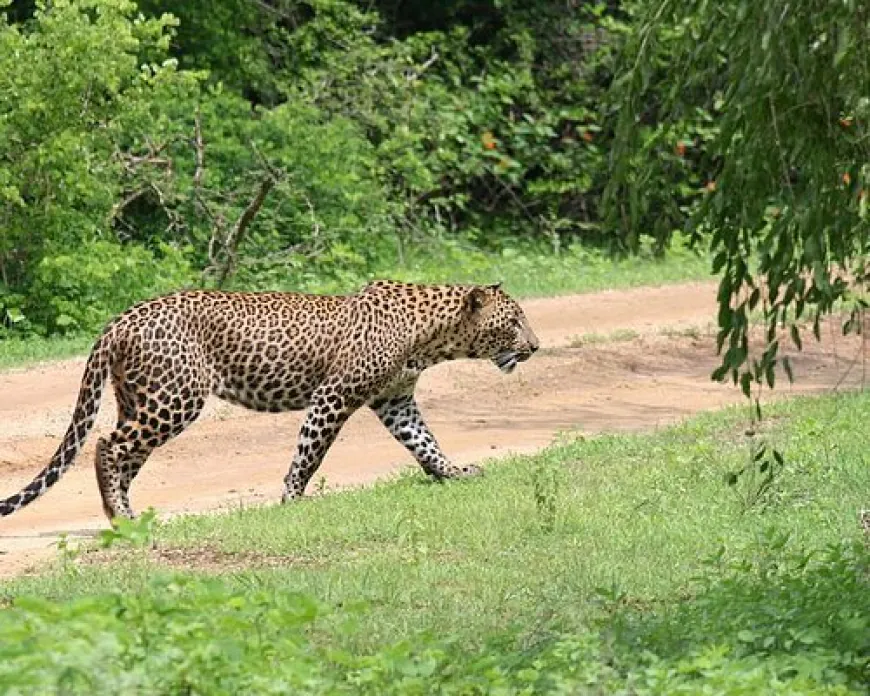
-
Sri Lanka's Wildlife Gem
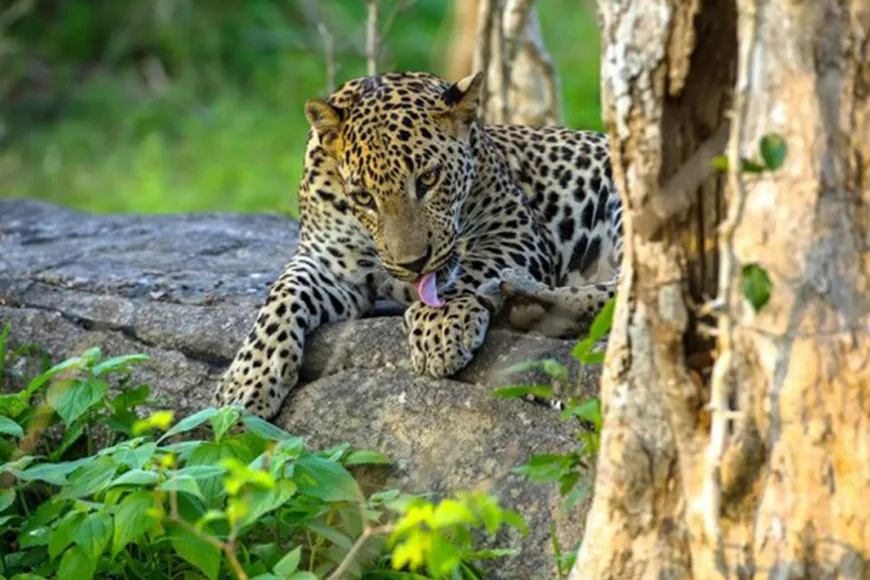
Yala National Park, one of Sri Lanka's 70 Important Bird Areas, is a paradise for bird enthusiasts, boasting 215 species including six endemic to the country. This diverse ecosystem offers visitors the chance to observe a wide range of avian life, from waterfowl and waders to forest-dwelling species and rare migratory birds.
Yala National Park, located in the southeastern region of Sri Lanka, is the country's most visited and second largest national park, covering an area of 979 square kilometers (378 sq mi). Stretching across the Southern and Uva Provinces, Yala is renowned for its rich biodiversity and cultural significance.
The park is divided into five blocks, with Blocks I and II being the most accessible to visitors. Yala's landscape is a diverse tapestry of ecosystems, including moist monsoon forests, dry monsoon forests, semi-deciduous forests, thorn forests, grasslands, freshwater and marine wetlands, and sandy beaches bordering the Indian Ocean. This variety of habitats contributes to the park's exceptional biodiversity.
Yala National Park is particularly famous for its high density of leopards, with Block I recognized as having one of the highest leopard concentrations in the world. The park is home to 44 species of mammals, including Sri Lankan elephants, sloth bears, water buffaloes, and wild boars. Visitors can also observe various reptiles, including crocodiles, and a multitude of bird species.
The park's history as a protected area dates back to 1900 when it was designated as a wildlife sanctuary. In 1938, Yala became one of Sri Lanka's first two national parks, along with Wilpattu. The park's importance extends beyond its natural wonders, as it also encompasses significant cultural and religious sites such as Sithulpahuwa and Magul Vihara.
Yala's climate is characterized by its location in the dry semi-arid region of Sri Lanka, with rainfall primarily occurring during the northeast monsoon. The park experiences mean annual temperatures ranging from 26.4°C (79.5°F) in January to 30°C (86°F) in April.
For visitors, the best time to explore Yala is during the dry season from February to June when animals are more easily spotted near water sources. The park can be accessed through multiple entrance points, with the Palatupana entrance being the most popular for accessing Block I.
-
Avian Diversity Highlights
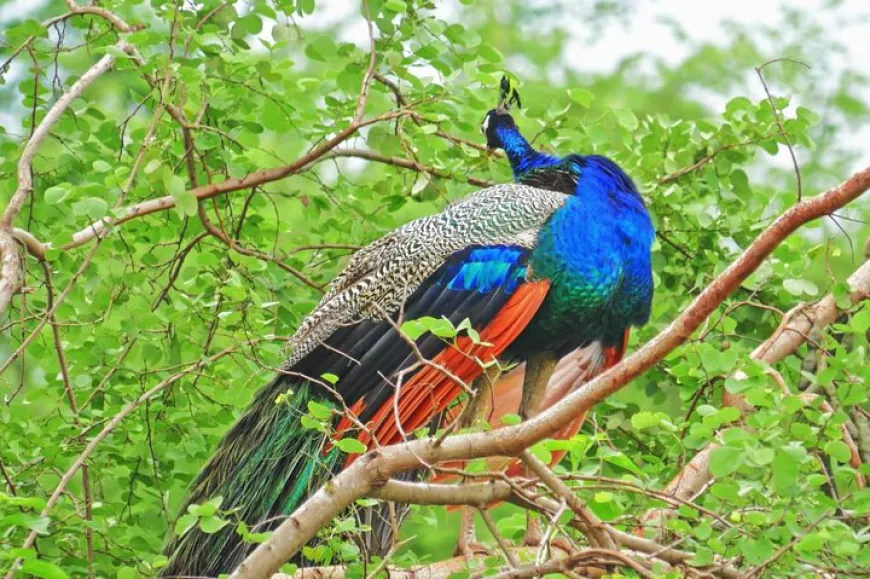
Yala National Park's significance as a bird-watching destination is underscored by its status as one of Sri Lanka's 70 Important Bird Areas (IBAs). The park's diverse ecosystems support a rich variety of avian species, making it a prime location for both casual observers and dedicated ornithologists.
Yala National Park is home to 215 bird species, showcasing the area's remarkable biodiversity. Six endemic species can be found in Yala, including:
- Sri Lanka grey hornbill (Ocyceros gingalensis)
- Sri Lanka junglefowl (Gallus lafayettii)
- Sri Lanka wood pigeon (Columba torringtoniae)
- Crimson-fronted barbet (Psilopogon rubricapillus)
- Black-capped bulbul (Pycnonotus melanicterus)
- Brown-capped babbler (Pellorneum fuscocapillus)
The park's wetlands support 90 waterbird species, with approximately half being migratory. Common waterbirds include:
- Lesser whistling duck (Dendrocygna javanica)
- Garganey
- Little cormorant
- Indian cormorant
- Grey heron
- Black-headed ibis
- Eurasian spoonbill
- Asian openbill
- Painted stork
Rare bird sightings in Yala include:
- Black-necked stork
- Lesser adjutant
- Great white pelican (migrant)
- Spot-billed pelican (resident)
During the northeast monsoon, thousands of migratory waterfowl visit Yala's lagoons, including:
- Northern pintail (Anas acuta)
- White-winged tern
- Eurasian curlew (Numenius arquata)
- Whimbrel
- Godwits
- Ruddy turnstone (Arenaria interpres)
Other notable bird species in the park:
- Indian peafowl
- Black stork
- Black-winged stilt
- Greater flamingo
- Crested serpent eagle
- White-bellied sea eagle
Forest birds found in Yala include:
- Orange-breasted green pigeon (Treron bicinctus)
- Hornbills
- Old World flycatchers
- Indian paradise flycatcher (Terpsiphone paradisi)
- Asian barbets
- Orioles
The saltpans surrounding Yala National Park, particularly near the Palatupana entrance, are excellent spots for observing sea birds.
This diverse array of avian species, coupled with Yala's varied ecosystems, makes the park an essential destination for bird enthusiasts, offering opportunities to observe both resident and migratory birds in their natural habitats.
-
Yala's Avian Highlights
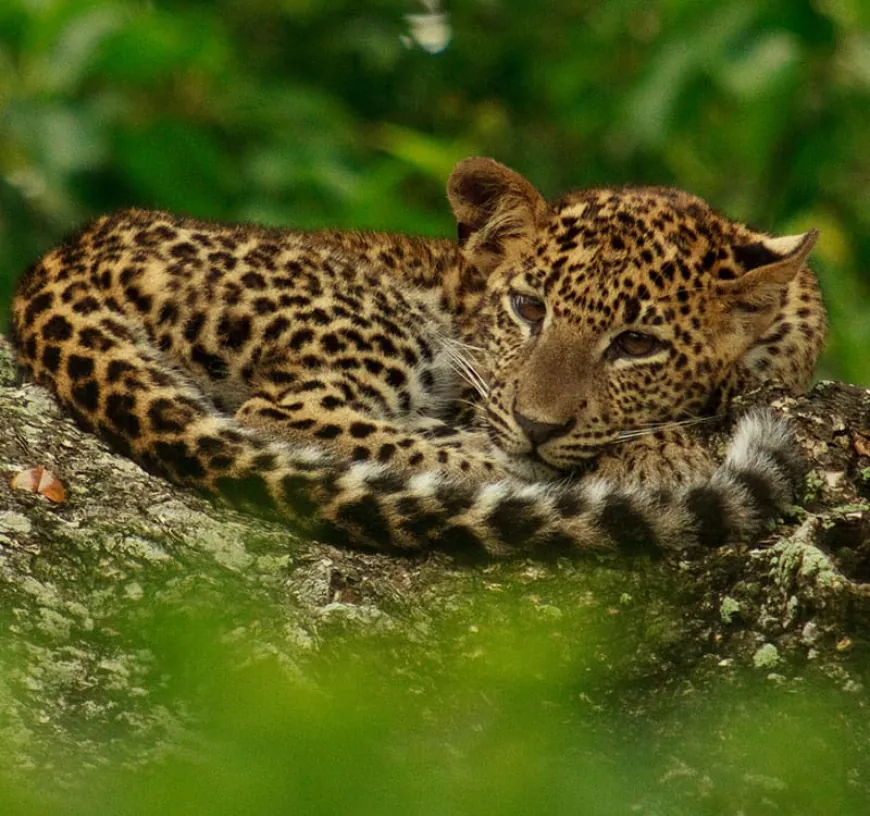
Yala National Park offers a diverse array of bird species for enthusiasts to observe, including both resident and migratory birds. The following table highlights some key species to look for during your visit to Yala:
Resident Species Migratory Species Sri Lanka Grey Hornbill (endemic) Northern Pintail Sri Lanka Junglefowl (endemic) White-winged Tern Spot-billed Pelican Eurasian Curlew Lesser Whistling Duck Ruddy Turnstone Indian Peafowl Great White Pelican Crested Serpent Eagle Garganey White-bellied Sea Eagle Godwits Orange-breasted Green Pigeon Whimbrel Black-capped Bulbul (endemic) Lesser Flamingo Brown-capped Babbler (endemic) Black-necked Stork Among the resident species, Yala National Park is home to several endemic birds found only in Sri Lanka. These include the Sri Lanka Grey Hornbill (Ocyceros gingalensis), Sri Lanka Junglefowl (Gallus lafayettii), and the Black-capped Bulbul (Pycnonotus melanicterus). The park also hosts impressive raptors such as the Crested Serpent Eagle and White-bellied Sea Eagle, which can often be spotted soaring above the diverse landscapes.
For waterbird enthusiasts, the resident Spot-billed Pelican and Lesser Whistling Duck (Dendrocygna javanica) are common sights in Yala's wetlands. The Indian Peafowl, with its striking plumage, is another notable resident that can be frequently observed in the park.
Yala becomes particularly exciting for birdwatchers during the northeast monsoon when thousands of migratory waterfowl visit the park's lagoons. Key migratory species to look out for include the Northern Pintail (Anas acuta), White-winged Tern, and Eurasian Curlew (Numenius arquata). The Ruddy Turnstone (Arenaria interpres) is another interesting migratory bird that can be spotted during this season.
Some rare and notable migratory visitors include the Great White Pelican and the Lesser Flamingo. The Black-necked Stork, while not exclusively migratory, is a rare sighting that lucky visitors might encounter.
The diverse ecosystems of Yala, ranging from wetlands to forests, provide habitats for a wide variety of both resident and migratory birds. This makes the park a year-round destination for birdwatching, with each season offering unique opportunities to observe different species.
-
Prime Birding Locations
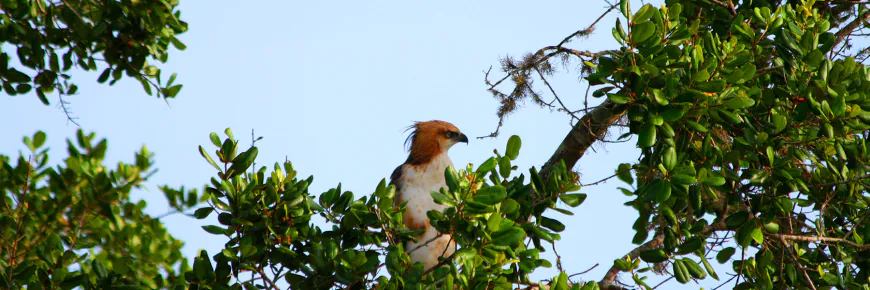
Yala National Park offers diverse habitats that attract a wide variety of bird species, making it an excellent destination for birdwatching. Here are some of the best spots within the park and surrounding areas for observing birds, including locations known for rare sightings:
Within Yala National Park:
- Lagoons and wetlands: Prime locations for spotting waterbirds and waders
- Moist and dry monsoon forests: Ideal for observing forest-dwelling species
- Grasslands: Excellent for spotting ground-dwelling birds
- Thorn forests: Home to various small bird species
Specific hotspots in and around Yala:
- Palatupana entrance area: Known for sea bird sightings
- Saltpans surrounding the park: Great for observing shorebirds and waders
- Sithulpahuwa: An ancient hermitage outside the park, offering unique birding opportunities
- Debarawewa wetland: A notable location for waterbird sightings
Rare sighting hotspots:
- Yala lagoons: Potential sightings of black-necked storks and lesser adjutants
- Coastal areas: Opportunities to spot lesser flamingos and pelicans
- Block I: Known for having the highest density of birds and wildlife in general
Best time for birdwatching:
- Northeast monsoon season: Ideal for observing migratory waterfowl species
- Dry season (February to June): Easier to spot birds near water sources
Tips for successful birdwatching in Yala:
- Visit during early morning or late afternoon when birds are most active
- Bring high-quality binoculars for better viewing
- Consider hiring a knowledgeable guide familiar with local bird species and their habitats
- Be patient and quiet to avoid disturbing the birds
By exploring these diverse locations within and around Yala National Park, birdwatchers can maximize their chances of observing a wide range of species, including some of Sri Lanka's endemic and rare birds. The park's varied ecosystems provide ample opportunities for both novice and experienced birders to enjoy the rich avian diversity of the region.
-
Peak Birding Periods
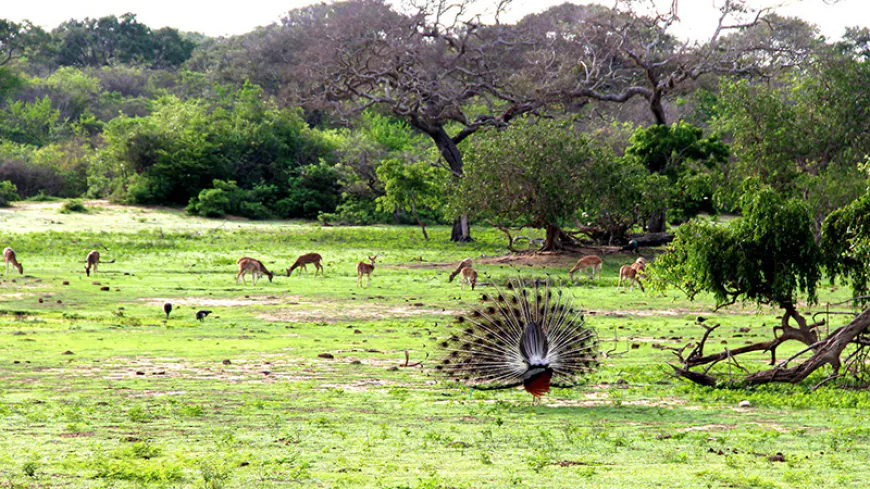
Yala National Park offers excellent bird watching opportunities throughout the year, but certain seasons and times of day are particularly favorable for observing a diverse range of species. Here's a guide to help plan your bird watching excursion in Yala:
Seasonal Migration Patterns:
- November to January: Peak season for migratory birds
- Thousands of migratory waterfowl visit Yala's lagoons during this period
- Species like Northern Pintail, White-winged Tern, and Eurasian Curlew can be observed
- September to March: Extended period for observing migratory birds
- Ideal time to witness a variety of migratory species in Bundala National Park, adjacent to Yala
- May to August: Dry season
- Wildlife, including birds, concentrate around water sources, making them easier to spot
- Less crowded in May and June, offering peaceful bird watching experiences
- September to mid-October: Park closure
- Yala National Park is typically closed during this period for rejuvenation
Recommended Hours of the Day:
- Early morning (6:00 AM - 10:00 AM):
- Optimal time for bird watching as many species are most active
- Cooler temperatures make for a more comfortable experience
- Late afternoon (3:00 PM - 6:00 PM):
- Another prime time for bird activity
- Excellent for observing raptors like the Crested Serpent Eagle and White-bellied Sea Eagle
- Midday:
- While bird activity may be reduced, it's still possible to observe some species
- Good time for spotting water birds near lagoons and wetlands
Tips for Optimal Bird Watching:
- Plan your visit during the northeast monsoon (November to February) for the best chance to see migratory species
- Book a morning safari starting at 6:00 AM to maximize bird sightings
- Consider a full-day safari to experience both morning and afternoon bird watching sessions
- Bring binoculars and a bird identification guide to enhance your experience
- Hire a knowledgeable guide familiar with Yala's bird species and their habitats
By considering these seasonal patterns and optimal times of day, bird watchers can significantly enhance their chances of observing a wide variety of species in Yala National Park, including both resident and migratory birds.
- November to January: Peak season for migratory birds
-
Birding Essentials and Techniques
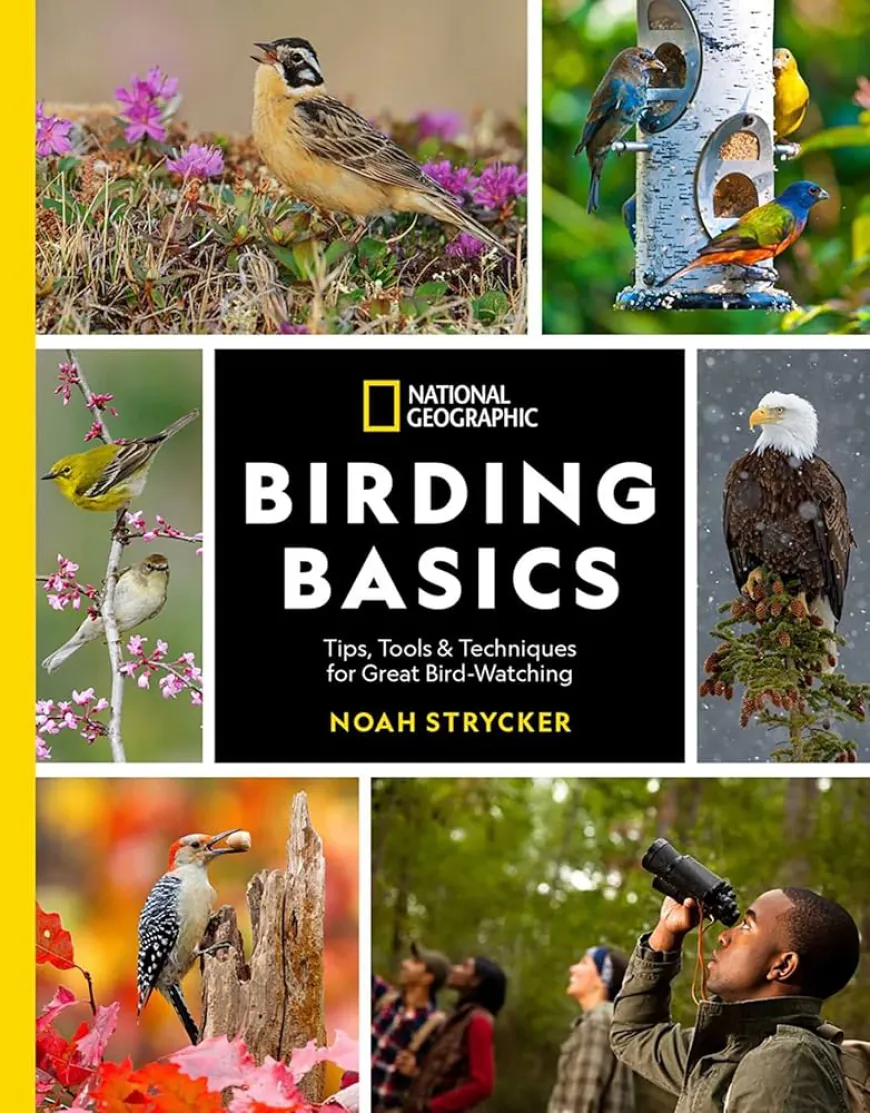
Bird watching in Yala National Park can be an enriching experience with the right gear and techniques. Here's a comprehensive list of essential equipment and effective methods for spotting and identifying birds:
Essential Gear and Equipment:
- Binoculars:
- The most crucial tool for bird watching
- Choose a pair with 7x or 8x magnification for a good balance between image size and field of view
- Consider factors like weight, objective lens diameter, and comfort
- Field Guide:
- Essential for bird identification
- Choose a guide specific to Sri Lanka or South Asia
- Smartphone with Birding Apps:
- Apps like Audubon Birds Guide or Song Sleuth for quick identification and information access
- Use for recording bird calls and accessing online resources
- Notebook and Pen:
- For documenting observations, species lists, and sketches
- Consider a waterproof notebook for Yala's varied weather conditions
- Camera:
- Useful for capturing images for later identification or sharing experiences
- A DSLR with a telephoto lens is ideal, but even a smartphone camera can be helpful
- Appropriate Clothing:
- Comfortable, weather-appropriate attire in neutral colors
- Sturdy, waterproof hiking boots for navigating Yala's terrain
- Backpack:
- To carry all your gear comfortably
- Choose one with good capacity and comfort features
- Sun Protection:
- Sunscreen, hat, and sunglasses for Yala's sunny climate
- Insect Repellent:
- To protect against mosquitoes and other insects
- Water and Snacks:
- Stay hydrated and energized during long observation periods
Techniques for Spotting and Identifying Birds:
- Start Early: Begin your bird watching at dawn when birds are most active
- Listen Carefully: Many birds are heard before they're seen. Learn to identify bird calls
- Scan Systematically: Use a methodical approach to scan trees, bushes, and the sky
- Look for Movement: Birds often betray their presence through movement
- Use Habitat as a Clue: Different bird species prefer specific habitats. Use this knowledge to narrow down possibilities
- Observe Behavior: Note feeding habits, flight patterns, and other behaviors to aid identification
- Use the Field Guide: Compare observed features with guide descriptions and illustrations
- Take Notes: Record details about size, shape, color patterns, and behavior for later reference
- Practice Patience: Sometimes the best sightings come from quietly waiting in one spot
- Join a Guided Tour: Local experts can provide valuable insights and help spot elusive species
- Respect Wildlife: Maintain a safe distance and avoid disturbing birds or their habitats
By combining these essential tools with effective observation techniques, you'll be well-equipped to enjoy the rich avian diversity of Yala National Park.
- Binoculars:
-
Capturing Avian Moments
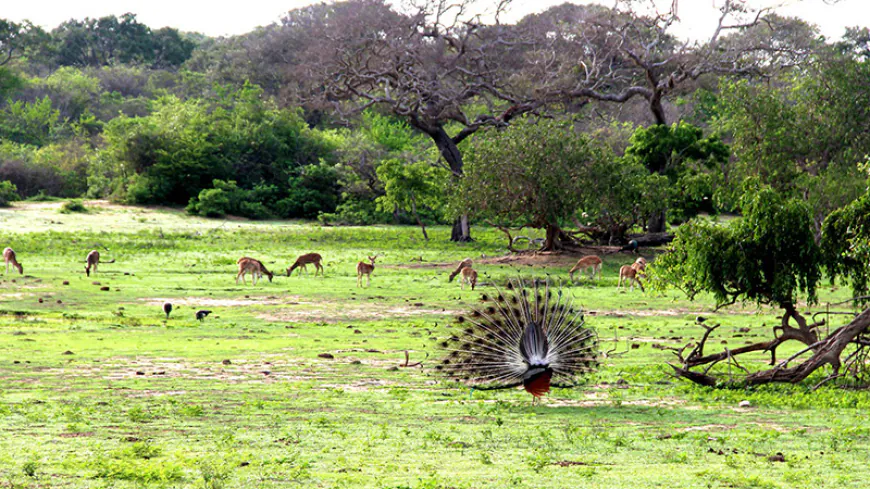
Bird photography in Yala National Park requires a combination of the right equipment, settings, and techniques. Here's a guide to help you capture stunning images of the park's diverse avian species:
Camera Settings
Camera Settings Recommended Values Shutter Speed At least 1/1000th of a second Aperture f/5.6 to f/8 ISO 400-1600 (depending on light conditions) Drive Mode Continuous shooting Focus Mode Continuous AF (AI Servo for Canon, AF-C for Nikon) Metering Mode Evaluative or Matrix Equipment Recommendations
- Camera: A DSLR or mirrorless camera with a fast frame rate (8 fps or higher) is ideal.
- Lenses: Lenses in the 300-600mm range are recommended for capturing detailed shots of birds.
- Tripod or Monopod: Helpful for stabilizing longer lenses, especially in low light conditions.
Camera Settings
- Shutter Speed: A minimum of 1/1000th of a second is recommended to freeze bird movement, especially for birds in flight.
- Aperture: Settings around f/5.6 to f/8 provide a good balance between depth of field and light gathering.
- ISO: Set as low as possible while still maintaining a fast shutter speed, typically between 400-1600 depending on lighting conditions.
Techniques for Capturing Birds
- Anticipate Behavior: Learn about the birds you're photographing to predict their movements and capture interesting moments.
- Choose Your Background: Position yourself to create clean, uncluttered backgrounds that make the bird stand out.
- Get Down to Eye Level: This perspective creates more intimate and engaging photos.
- Use Continuous Autofocus: Helps track moving birds and keep them in sharp focus.
- Practice Patience: Wait for the right moment rather than chasing birds, which often results in photos of birds turning away.
- Shoot in Early Morning or Late Afternoon: The soft, warm light during these "golden hours" enhances colors and creates beautiful effects.
- Focus on the Eye: Ensure the bird's eye is in sharp focus for a more compelling image.
- Capture Behavior: Look for interesting actions like feeding, preening, or interactions between birds.
- Consider the Environment: Include elements of the bird's habitat to tell a more complete story.
- Experiment with Different Compositions: Try both horizontal and vertical orientations, as well as different framing options.
Ethical Wildlife Photography Practices
- Prioritize Welfare: Always prioritize the welfare of the birds and follow ethical wildlife photography practices.
- Avoid Disturbance: Avoid disturbing nesting sites or using calls or bait to attract birds.
With practice and patience, you can capture stunning images of Yala's diverse bird species while respecting their natural behaviors and habitats.
-
Yala's Avian Wonderland
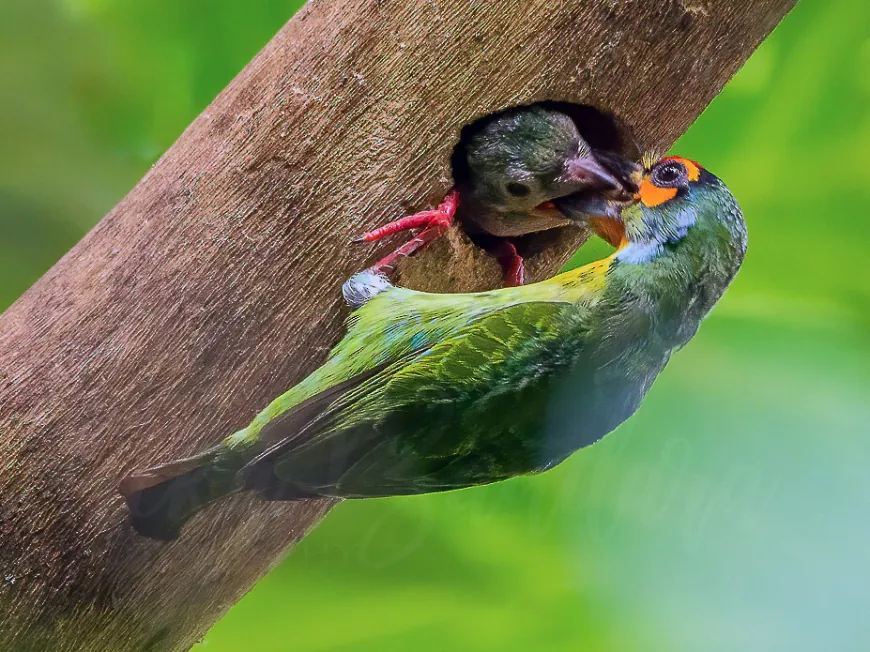
Yala National Park offers an exceptional bird watching experience, boasting a rich diversity of avian species in a variety of habitats. Here's a recap of the bird watching opportunities and encouragement to explore Yala's birdlife:
Diverse Avian Population:
- Home to 215 bird species, including 6 endemic to Sri Lanka
- 90 waterbird species, with half being migratory
- Rare sightings possible, such as black-necked storks and lesser adjutants
Key Habitats for Bird Watching:
- Lagoons and wetlands
- Moist and dry monsoon forests
- Grasslands
- Thorn forests
- Coastal areas and saltpans
Seasonal Highlights:
- Northeast Monsoon (November to January): Brings thousands of migratory waterfowl
- Dry Season (February to June): Concentrates birds around water sources
Notable Species to Look For:
- Endemic Birds: Sri Lanka grey hornbill, Sri Lanka junglefowl, Sri Lanka wood pigeon
- Waterbirds: Pelicans, flamingos, herons, egrets
- Raptors: Crested serpent eagle, white-bellied sea eagle
- Forest Birds: Orange-breasted green pigeon, hornbills, flycatchers
Birdwatching Tips:
- Visit during early morning or late afternoon for peak bird activity
- Bring essential gear: binoculars, field guide, and camera
- Consider hiring a knowledgeable guide for better species identification
Conclusion:
Yala National Park's status as an Important Bird Area (IBA) and its diverse ecosystems make it a must-visit destination for both novice and experienced bird watchers. The opportunity to observe endemic species alongside migratory birds in their natural habitats is truly unique. Whether you're interested in waterbirds, raptors, or elusive forest species, Yala offers something for every bird enthusiast.
We encourage you to explore Yala's birdlife and immerse yourself in the rich avian diversity of this remarkable park. Each visit has the potential for new discoveries and unforgettable encounters with Sri Lanka's beautiful birds. By respecting the park's guidelines and practicing responsible bird watching, you can contribute to the conservation of these species while enjoying a rewarding wildlife experience.
-
Frequently Asked Questions
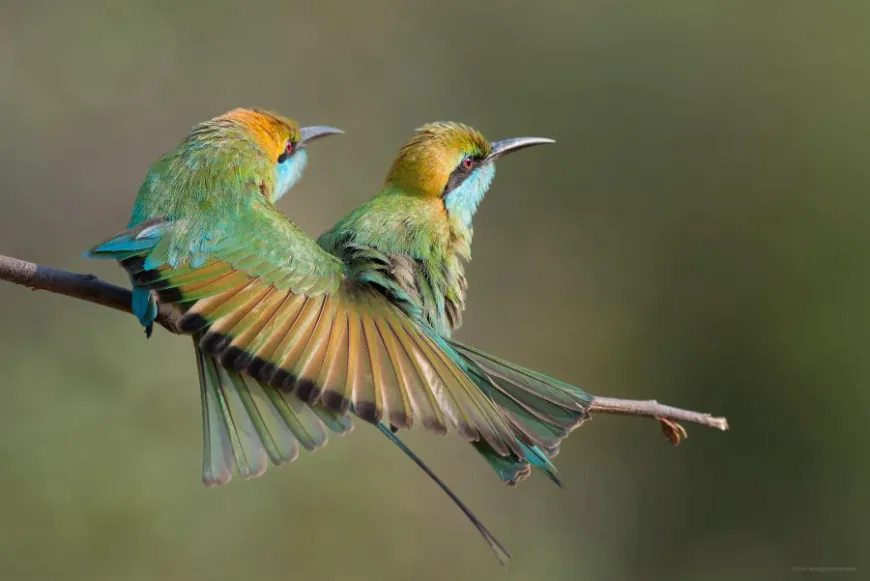
Here are some frequently asked questions (FAQs) about bird watching in Yala National Park:
Frequently Asked Questions (FAQs)
What is the best time of year for bird watching in Yala National Park?
- The best time is during the northeast monsoon season from November to January, when thousands of migratory birds visit the park's lagoons.
How many bird species can be found in Yala National Park?
- Yala National Park is home to 215 bird species, including 6 endemic to Sri Lanka.
Are there any endemic bird species in Yala National Park?
- Yes, Yala hosts 6 endemic species, including the Sri Lanka grey hornbill, Sri Lanka junglefowl, and Sri Lanka wood pigeon.
What equipment do I need for bird watching in Yala?
- Essential gear includes binoculars, a field guide specific to Sri Lanka, comfortable clothing, and a camera if desired.
Can I photograph birds in Yala National Park?
- Yes, bird photography is allowed. A DSLR or mirrorless camera with a telephoto lens (300-600mm range) is recommended for best results.
Are guided bird watching tours available in Yala?
- Yes, many tour operators offer guided bird watching safaris in Yala National Park.
What are some rare bird species I might see in Yala?
- Rare sightings may include black-necked storks, lesser adjutants, and great white pelicans.
Is Yala National Park open year-round for bird watching?
- Yala is generally open year-round, but some areas may close during September to October for maintenance.
What's the best time of day for bird watching in Yala?
- Early morning (6:00 AM - 10:00 AM) and late afternoon (3:00 PM - 6:00 PM) are the best times for bird activity.
Are there specific areas within Yala that are best for bird watching?
- Key areas include lagoons, wetlands, forests, and the saltpans surrounding the park. The Palatupana entrance area is known for sea bird sightings.
-
Connect and Engage
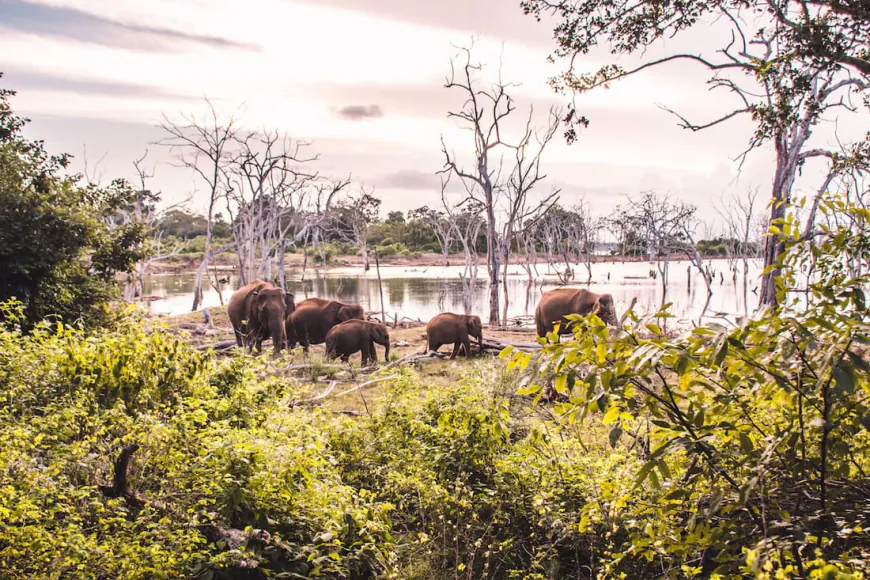
Stay Connected with Yala's Avian Adventures
Enhance your Yala bird watching experience by staying connected with us. Here are ways to get more information and share your experiences:
Contact us for more information:
- Email: [email protected]
- Phone: +94723456726
- Website: yalalk.com
Join our newsletter:
- Subscribe to receive regular updates on Yala's birdlife, seasonal highlights, and special events
- Get exclusive tips from expert bird watchers and photographers
Share your experiences:
- Comment on our blog posts to share your bird watching stories and sightings
- Connect with fellow bird enthusiasts and exchange tips
Spread the word:
- Share our articles on social media to help others discover Yala's rich avian diversity
- Use hashtags like #YalaBirdwatching or #YalaAvianAdventures when posting your bird photos
Contribute to citizen science:
- Submit your bird sightings to help with ongoing research and conservation efforts
- Participate in annual bird counts organized in Yala National Park
By staying connected, you'll not only enhance your own bird watching experiences but also contribute to the broader community of Yala bird enthusiasts. Don't hesitate to reach out – we're here to help you make the most of your avian adventures in Yala National Park!
What's Your Reaction?








































